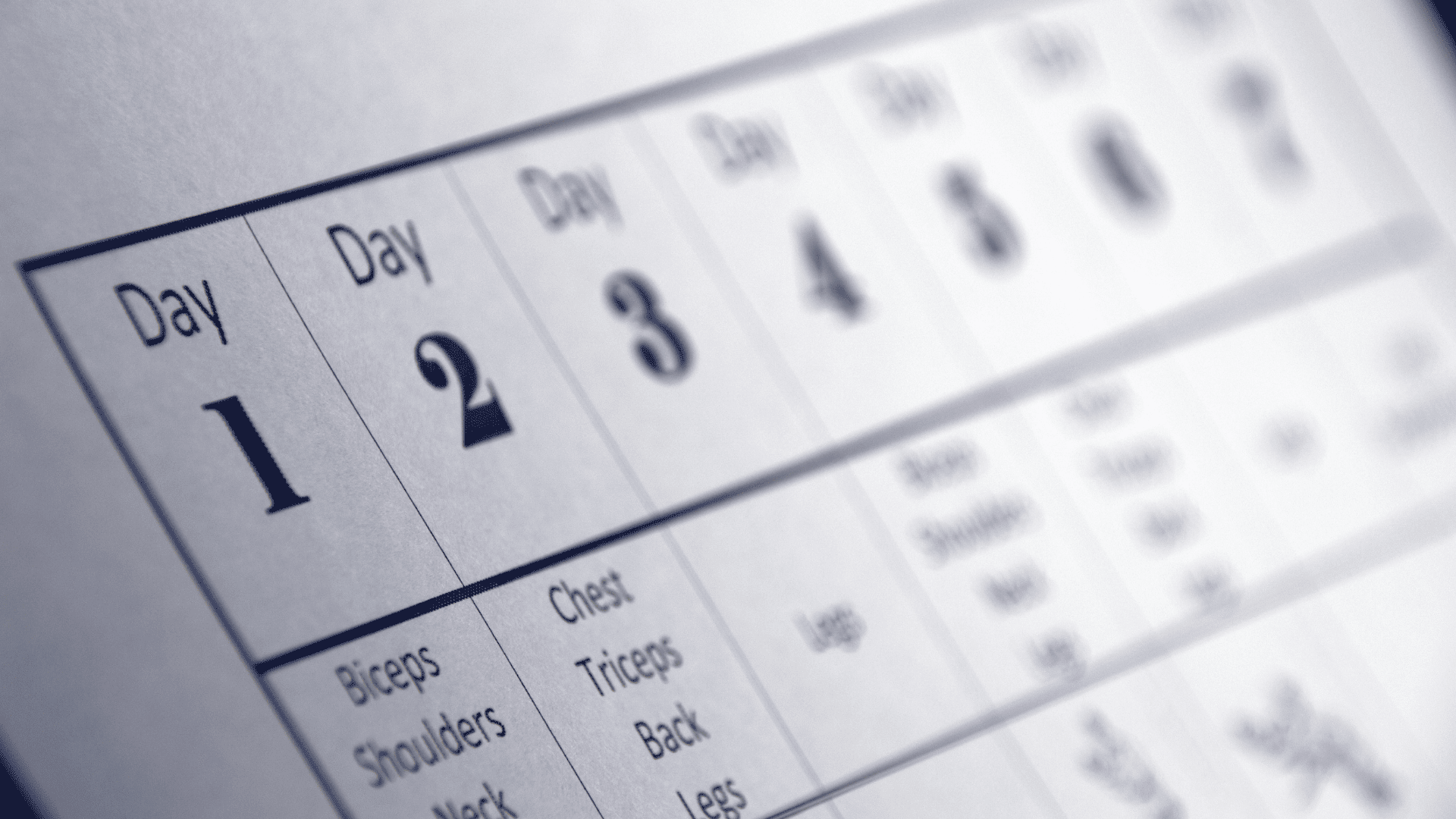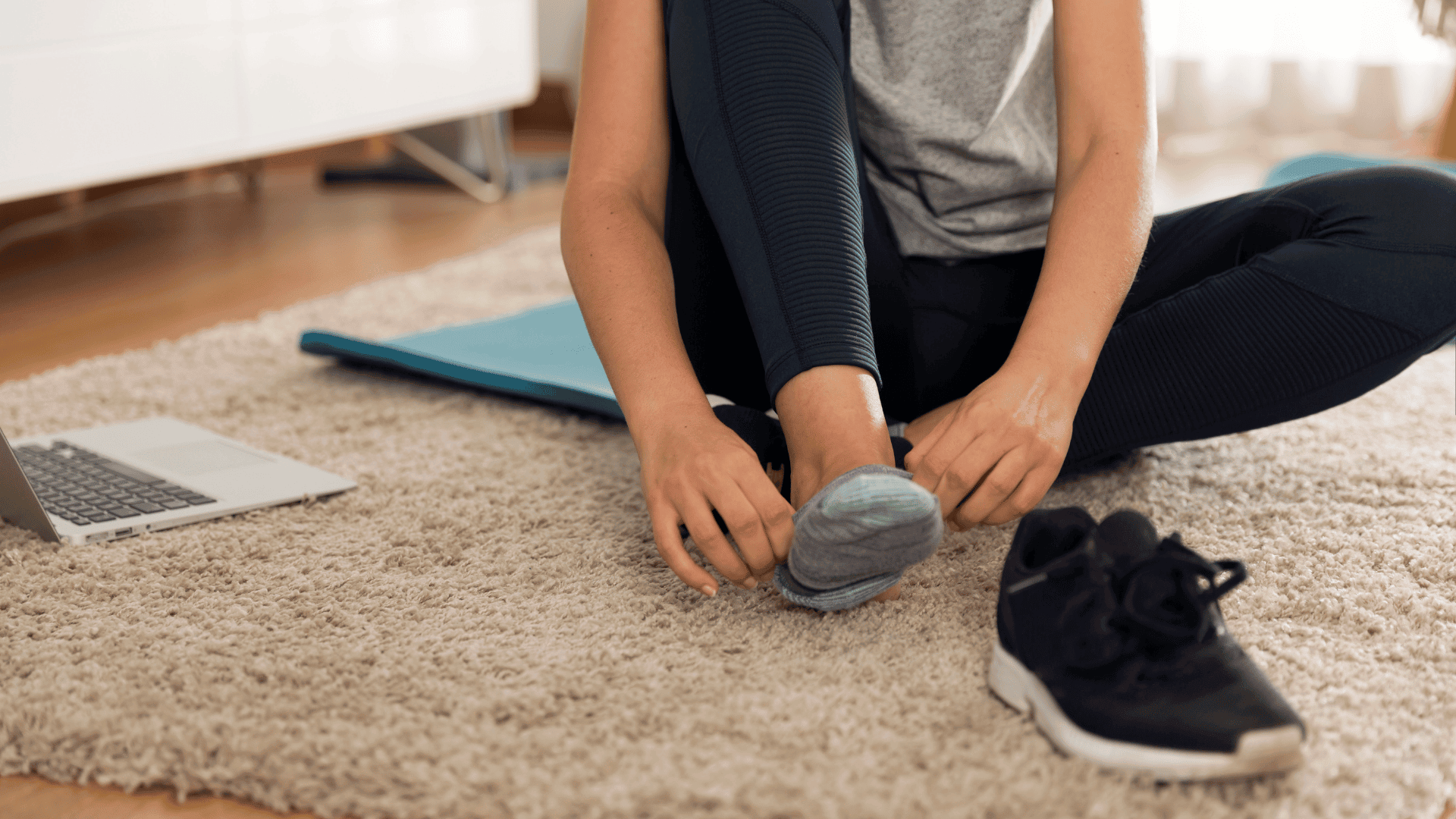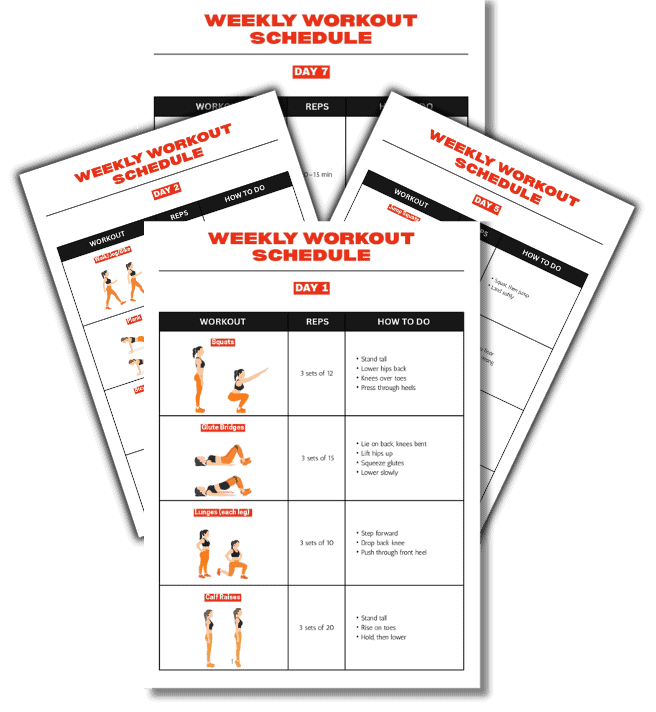Most people know that working out is good for the body. (and mind) It helps you feel better, sleep better, and stay strong.
So why is it still so hard to get started?
Here’s the thing…
You’re not lazy. You’re not broken. You’re just stuck. And the truth is, motivation doesn’t always show up when you need it most.
This guide isn’t about willpower or pushing through. It’s not a pep talk. It’s a list of real things that you can do that make it easier to start working out, and a lot easier to stick with.
Why Motivation Feels Hard

Most people think they just need more motivation. But that’s not really the issue.
Motivation isn’t the problem… It’s friction.
It’s hard to work out when you’re tired, busy, or pulled in too many directions. Your brain looks for the easiest option, and a workout no matter how short starts to feel like one more thing to deal with.
That’s why getting started is the hardest part. (Not the workout itself)
You don’t need to dig deep or “want it more.” You just need to remove the little things that make it harder to begin. Like not knowing what to do, having to dig out workout clothes, or the pressure to do a full 45 minutes.
But, the less you have to think, plan, or push yourself to start…
The more likely you are to just do it.
And that’s where the next section comes in.
7 Ways to Motivate Yourself to Work Out
For you to be motivated to workout, you don’t need a pep talk. You just need something that gets you moving especially on the days when you’d rather do anything else.
These seven tips are simple, realistic, and built to meet you where you are.
1. Set the Bar Low on Purpose

One of the biggest reasons people skip workouts?
They make the goal too big. (which make it IMPOSSIBLE)
You see, you don’t need to crush it. What you only need is to just start.
Telling yourself you’ll work out for 45 minutes feels heavy. But telling yourself you’ll move for 5 minutes? That’s manageable.
And most of the time, you’ll end up doing more. (but even if you don’t, it still counts)
So why not try this.
Say out loud: “I only have to do five minutes.” Then, stretch, walk, squat or whatever it is that feels light.
And once you’re in motion, let the momentum take over.
2. Pair It With Something You Already Like

Aside from setting the bar low on purpose, you can also layer movement into what you already do.
For example, try stretching while watching your favorite show. Or walk while listening to a podcast.
And even do a quick mobility flow right after brushing your teeth.
Pairing movement with something familiar makes it easier to start and easier to stick with.
3. Lay Out Your Clothes in Advance

This one’s old school, but it works. (Yup, I’ll vouch to this)
If your workout clothes are already out, you’re one step closer to showing up. It removes a choice and that saves energy. Plus, it sends a signal to your brain that.
Hey, this is happening.
You can also try putting your workout gear somewhere visible on a chair, by the bed, or next to your shoes. Even seeing them is a gentle nudge in the right direction.
4. Make It Ridiculously Easy to Start

Don’t wait for the perfect plan. Don’t scroll for the best video. Just do something small to get your body in motion.
That might be walking for two minutes. Doing five jumping jacks. Rolling your shoulders and touching your toes. Starting small takes away the pressure, and starting at all is the win.
To do this, you can keep a mental list of “go-to moves.”
Things like: 10 squats, 20 steps, or 3 wall push-ups. When your brain says “ugh,” your body already knows what to do.
5. Create a “Why” That’s Yours

Forget what everyone else is doing. Your reason matters more than any trend or challenge online.
Want better sleep? More energy at work? To feel steadier on stairs? Great. That’s your “why.” Then, tie your workouts to that, and not someone else’s goals.
To create YOUR why, you can write your reason on a sticky note or set it as your phone lock screen. Just make sure to keep it personal. And keep it in sight.
6. Use a Visual Tracker (That Isn’t Shame-Based)

Progress doesn’t have to mean big numbers. It can be a sticker on a calendar or a tally mark on your fridge.
Seeing that streak even just showing up builds pride and keeps the habit going. You’re not aiming for perfection. You’re aiming for consistency.
For example, you can print a calendar. Then draw an “X” every day you move no matter how much or how little.
The more you see it fill up, the more you’ll want to keep going.
7. Celebrate the Finish, Not the Performance

You don’t have to be fast. You don’t have to be strong.
You just have to finish.
A short, wobbly, awkward workout is still a workout. (It is) The win is showing up especially on the days when you almost didn’t.
How to Stay Consistent

Getting started is a big win. But staying consistent? That’s where real change happens.
And the good news is you don’t need to be perfect. You just need a plan that’s simple enough to repeat, even on a bad day.
Here’s how to keep showing up without burning out.
Keep It Short and Repeatable
A workout doesn’t have to be long to be worth it. In fact, the shorter it is, the more likely you’ll actually do it.
Pick something that fits your life, not something you have to squeeze in. A 10-minute walk. A 5-minute stretch. A short YouTube video you actually enjoy.
The easier it is to repeat, the easier it becomes part of your routine.
Don’t Over-Plan or Wait for the Perfect Routine
You don’t need a fancy program just to stay consistent. You don’t need the “right” gear, the “best” time of day, or a complete gym setup.
Trying to build the perfect plan usually means you never start at all.
Just pick one thing you can do today and do it again tomorrow. The routine will shape itself over time.
Link It to Something You Already Do
Habits stick better when they’re tied to something familiar.
You brush your teeth every morning? Great. Do 10 squats right after. Do you drink coffee every afternoon? Add a walk before or after.
You’re not starting from scratch, you’re just stacking a new habit onto one you already have.
Repeat Before You Optimize
It’s easy to fall into the trap of constantly tweaking, changing your workout, trying a new app, or switching plans too often.
But consistency comes from repetition, not reinvention.
Do the same small thing a few times a week. Once it feels natural, you can make it harder or longer. (Not before)
What to Do on Days You Still Don’t Feel Like It

Some days, you’re just not feeling it. (And that’s completely normal) Maybe you’re tired, busy, or your brain just isn’t in the mood.
But that doesn’t mean you’ve failed. It just means today calls for something different and (maybe) smaller.
So instead of skipping your workout completely, why not give yourself a plan B.
That might be a short walk around the block, some light stretching, or even one round of mobility moves on the floor. (These count too)
The goal isn’t to train hard or go all in. The goal is to keep the habit going even with the tiniest action. It doesn’t matter if it’s only one rep, one stretch, one lap around your kitchen.
Those small things still tell your brain that YES, you show up for yourself.
And once you start, you might end up doing a little more than you planned.
(But even if you don’t, you still kept the streak alive and that’s a win)
So on the hard days, think smaller.
Then, move just enough to stay in motion.
Motivation Doesn’t Always Come First

A lot of people wait until they “feel like it” before they work out. But if you wait for that spark to show up first…
You’ll be waiting a long time.
Motivation doesn’t come before the action, it comes after.
Once you take that first step (i.e. press play on a video, put on your shoes, or just move for a minute) something will change. Your body gets going, and your brain follows.
And the more you move, the more you want to keep moving. Not because it suddenly gets easier, but because you’ve started building momentum.
And momentum? It’s powerful.
You see, you don’t have to feel excited or pumped up just to start.
You just have to START.
Just Keep Starting
You don’t need the perfect plan. You don’t need a streak of great workouts. You just need to start. (again and again)
Some days will feel easy. Some won’t.
And that’s normal.
What matters most is that you keep showing up on your terms, in a way that fits your life. It might be five minutes. It might be a full workout.
Either one is a win.
Because consistency doesn’t come from big moves. It comes from small choices, made over and over.
Momentum builds one decision at a time.
And every time you start, you’re already doing enough.
A Simple Plan That Helps You Show Up—Even on Off Days

Staying consistent gets a lot easier when you’re not guessing what to do next.
The free Weekly Workout Schedule lays out short, straightforward workouts you can do even when energy or motivation is low.
With built-in structure and rest days, it helps you build momentum without the pressure, just clear steps you can actually stick to.
Frequently Asked Questions
1. What should I do if I always fall off track?
Start smaller. Then repeat it. You don’t need to restart your whole routine, just pick one thing (like a walk or stretch) and do it again tomorrow. It’s not about “starting over.” It’s about picking up where you left off.
2. How long does it take to build a habit?
Most habits take a few weeks to stick but only if they’re simple and repeatable. Don’t focus on the calendar. Focus on consistency. The easier it is to keep doing, the faster it becomes part of your day.
3. Should I force myself to work out when I’m not feeling it?
Not force but start small anyway. You don’t need to go all out. Just move a little. One stretch, one squat, one walk around the block. Most of the time, the hardest part is getting started. After that, it gets easier.
4. What’s the best time of day to work out for motivation?
Whatever time you’re most likely to actually do it. For some, that’s early morning. For others, it’s after work. There’s no perfect time, just the one that fits into your day with the least resistance.
5. Can short workouts really make a difference?
Yes. If you do them consistently, even 5 to 10 minutes of movement can improve strength, energy, and mood. It’s not about the length, it’s about the habit. Small adds up.










